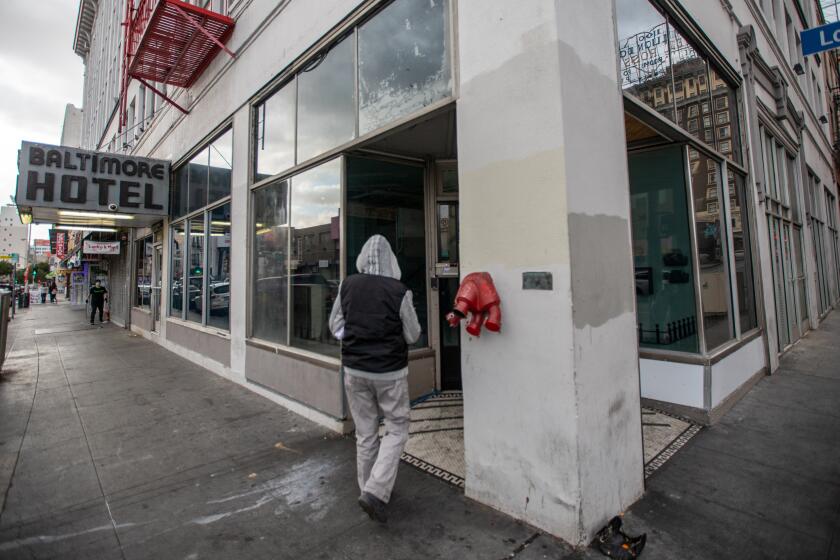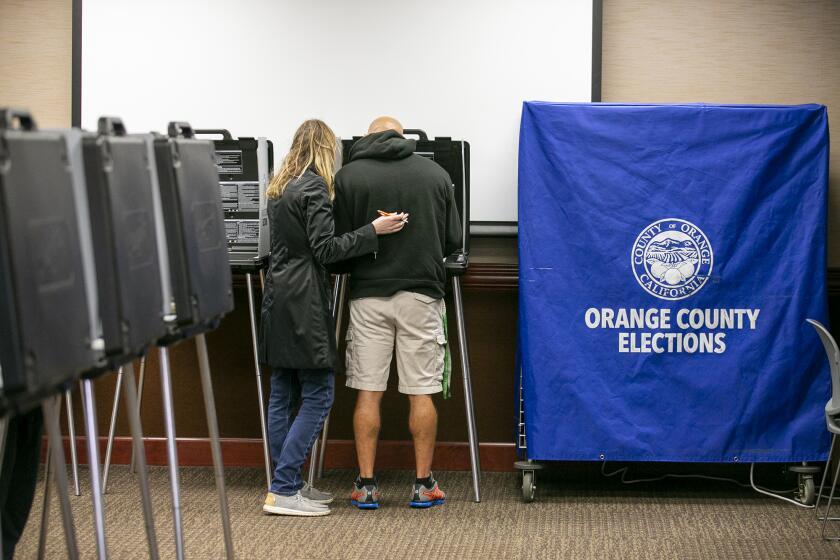PG&E bankruptcy exit plan doesn’t need Newsom’s approval — but actually it does

PG&E Corp.’s plan to emerge from bankruptcy technically doesn’t need California Gov. Gavin Newsom’s approval. But pragmatically, it probably does.
Newsom has pilloried the utility over the management and infrastructure problems leading to the destructive and deadly wildfires that plunged it into bankruptcy. He excoriated it when it blacked out power in swaths of Northern and Central California. And he sees this as a moment to make sure — for the good of the state and his own political career — that the company changes its ways.
PG&E’s reorganization needs approval not only from the U.S. Bankruptcy Court but also from the California Public Utilities Commission, where Newsom has substantial influence.
Newsom appointed the CPUC’s president, Marybel Batjer, last summer as questions about the utility’s fate loomed large, knowing he needed an official whose approach to the matter would dovetail with his own.
And the governor’s “voice is an important one for the CPUC as it considers whether or not to approve a plan,” said Steven Weissman, a lecturer at UC Berkeley’s Goldman School of Public Policy and a former CPUC administrative law judge. “The CPUC shares the governor’s interest in ensuring energy policy is consistent and well coordinated across numerous state agencies.”
Newsom also keeps threatening to have the state take over of PG&E if, in his opinion, the San Francisco company’s plan doesn’t comply with a new state law that outlines the steps it must take to exit bankruptcy protection by June 30. The utility reached a milestone Wednesday, announcing that it had reached an agreement with two major creditors. But the governor deemed that plan unacceptable, saying it wouldn’t put PG&E in a strong enough position post-bankruptcy.
“If they don’t get their act together, we will do it for them — period, full stop,” Newsom told reporters Wednesday. A state takeover is “not an idle threat,” he said. “It’s not the preferred strategy, but it is a strategy we’re pursuing, and we’re working with legislative leaders to codify that.”
The utility said that it remains in talks with Newsom’s office in hopes of overcoming the governor’s objections and that its reorganization plan would be changed in the weeks ahead.
PG&E filed for Chapter 11 bankruptcy protection nearly a year ago in anticipation of facing multibillion-dollar legal claims for its role in deadly wildfires that ravaged Northern California over the last several years.
Under Chapter 11, a company keeps operating while it works out a restructuring plan with its creditors, shareholders and others, and in PG&E’s case, those other parties included tens of thousands of fire victims.
PG&E has reached settlements to pay the victims, insurance companies, cities, counties and others totaling $25.5 billion as part of its reorganization, and the overall plan requires the approval of U.S. Bankruptcy Judge Dennis Montali. The court’s next hearing on PG&E’s status is Wednesday.
The utility cleared a hurdle this week when it reached a settlement with two of PG&E’s major bondholders — Pacific Investment Management Co., known as Pimco, and Elliott Management Corp. — that agreed to drop a rival reorganization plan they had proposed.
As part of that settlement Wednesday, PG&E said it would save about $1 billion by refinancing higher-interest debt. That savings would reduce costs to ratepayers and is “an important consideration for regulators,” Kit Konolige, senior utilities analyst with Bloomberg Intelligence, said in a note.
But there’s an additional, complex layer to PG&E’s bankruptcy. PG&E’s plan also must comply with that new state law, Assembly Bill 1054, that covers the bankruptcy and how utilities are covered for fires.
PG&E also needs to comply with AB 1054 if it wants to tap into a new $21-billion state wildfire fund for future fires. Utilities can access the fund if their equipment ignites a fire that leads to significant damage, provided the CPUC determines that the utilities acted responsibly.
In the fall, when public anger exploded over PG&E’s decision to cut off power to millions of customers that left them in the dark for days, Newsom hinted at a possible government takeover of PG&E if the bankruptcy reorganization failed to meet the conditions of AB 1054 in time. PG&E had cut the power to make sure it wouldn’t spark additional blazes in the dry, windy weather.
Newsom first rejected PG&E’s restructuring plan in a Dec. 13 letter to PG&E Chief Executive William Johnson, saying the plan would not leave PG&E “positioned to provide safe, reliable and affordable service” to its 16 million customers in Northern and Central California “as required by AB 1054.”
“The resolution of this bankruptcy must yield a radically restructured and transformed utility that is responsible and accountable,” Newsom wrote. “For too long, PG&E has been mismanaged, failed to make adequate investments in fire safety and fire prevention and neglected critical infrastructure.”
Newsom contended, among other things, that the cost of the financing methods planned by PG&E to pay the victims’ claims were too onerous and would leave the reorganized utility “with limited tools to finance itself when it needs to access capital to make billions of dollars in safety investments.”
Then, on Wednesday, Newsom reiterated his objections in a filing with the Bankruptcy Court, claiming PG&E had “yet to make a single modification” to its plan to ensure it satisfies AB 1054. He also argued that PG&E was trying “to leverage the Chapter 11 process to force” the CPUC to approve “a sub-optimal plan.”
Newsom also reiterated that he was “pursuing strategies to protect California’s interests through further intervention, including a state takeover of the utility.” He did not elaborate on the possible terms of a takeover.
PG&E said in a statement that it would “continue to engage with the Governor’s office to address his concerns.”
Bloomberg was used in compiling this report.







